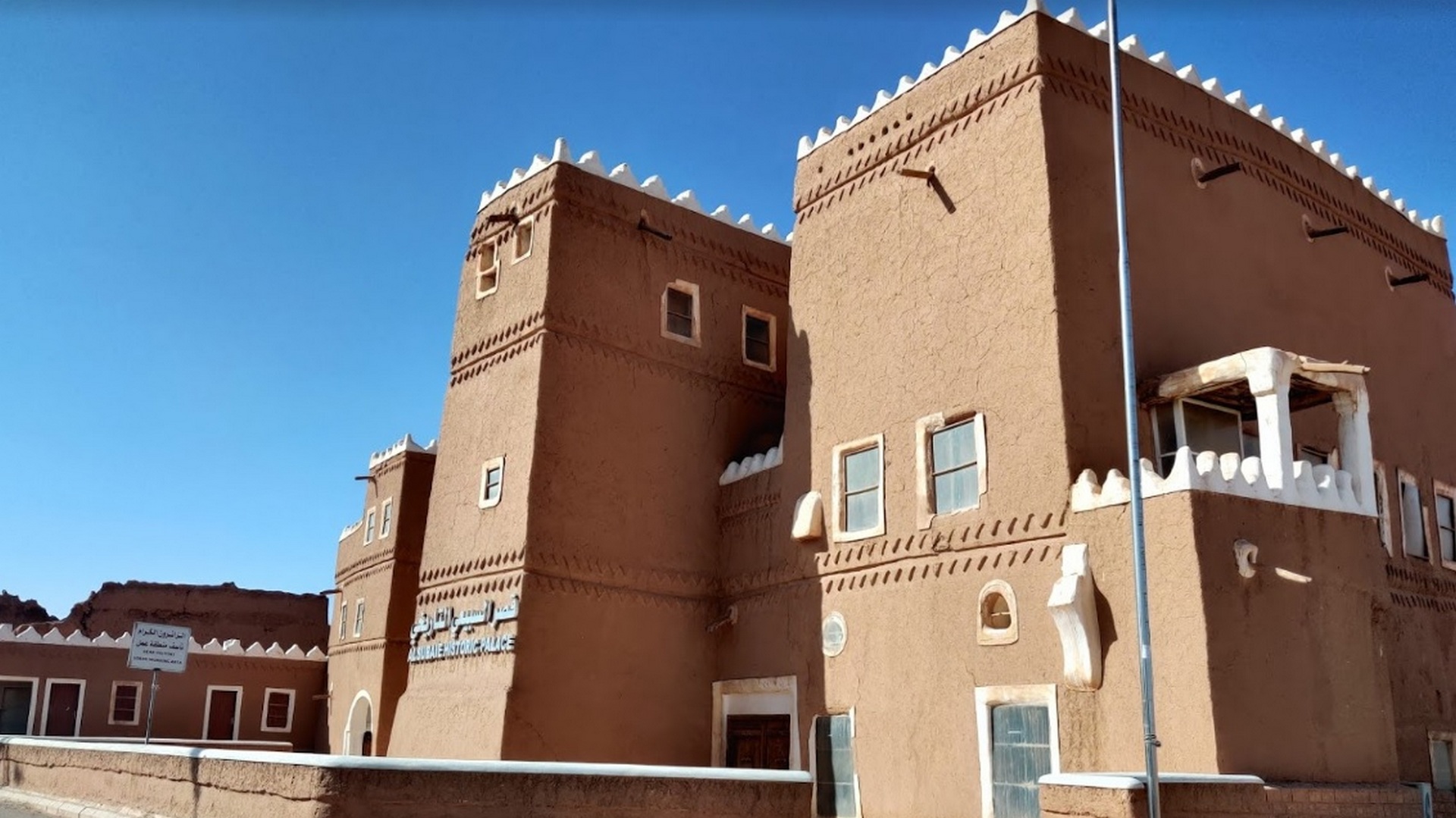Description
Property Name: Al Subaie Palace
Inventory No: 966-1-11
Date of infill of the inventory form: 2010-05-22
Country (State party): Saudi Arabia
Province: Riyadh
Town: Shagra
Geographic coordinates: 25° 15′ 15.1″ N
45° 15′ 14.8″ E
Historic Period: 20th century, 1st half
Year of Construction: 1907
Style: Najdi
Original Use: Palace
Current Use: Museum
Architect: Unknown, Abdel-Wahed El-Wakil, Array
Significance
Al Subaie Palace is one of the most prominent historical palaces in Saudi Arabia. It is located in Al- Shagra province, in Riyadh, and was built in an Andalusian, Islamic style. The palace sits in the south western
corner of the Old Town, overlooking the old ‘souks’ (markets). King Abdul Aziz would rest in this palace while travelling back and forth from Riyadh to Hejaz. It was first restored in 1411 AH (1990 AD), and then fully restored in 1421 AH (2000 AD).The House of Al-Subaie is located in the city of Shaqra, more than 80 years old. And the decorative, which was prevalent in the central region of the Kingdom. It will be converted into a heritage museum.
When Abdul Rahman Abdullah Took The House of money in the year in 1337 AH. he ordered the constructions to built the palace in 1358 AH, the work finished constructive next year, and supervised the construction of Palace of the Al-Muraba, and assisted by teachers and builders, such as Ibn Zouman, Osman bin Hatim. The Palace consists of two floors and came in the form of sub-rectangular and it’s contains a wide range of rooms and The main Material for the palace are the clay (adobe), The columns is the most important architectural elements in the palace, The columns made up of circular stone beads, the roof is composed of Wooden beams and brushing over like palm fronds and then a layer of mud and then a layer of plaster. The doors of the house money Ishqra of the most beautiful decorative elements in traditional architecture, including Benjd has the decoration engraved or painted used the natural colors derived from plants such as red color taken from the fruit of the pomegranate and others.
Selection Criteria
i. to represent a masterpiece of human creative genius
State of Preservation
Has been expropriated for the benefit of the Department of Antiquities was qualified to become a museum and monuments office
• After restoration
References
Commission of Tourism and Heritage


